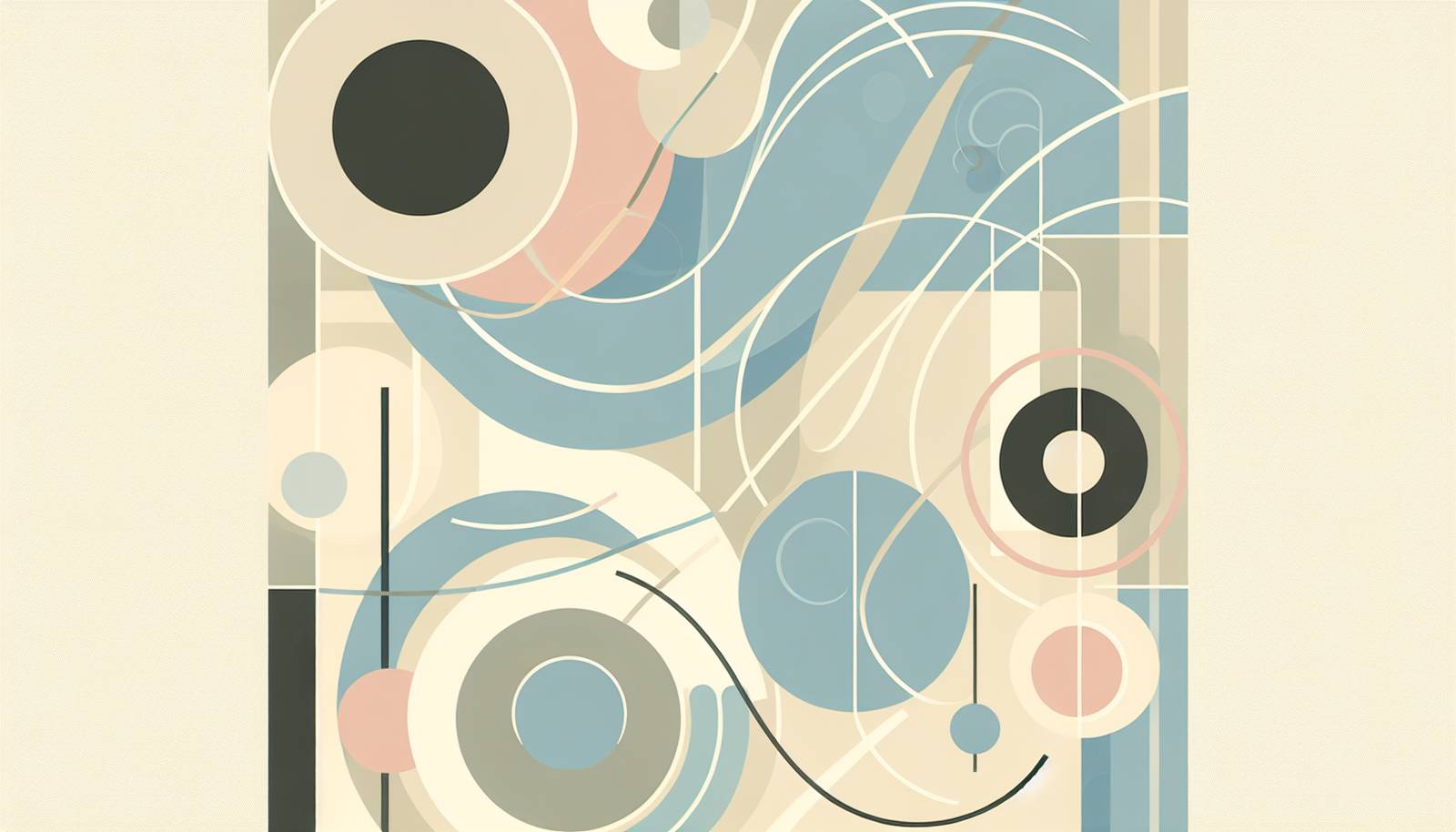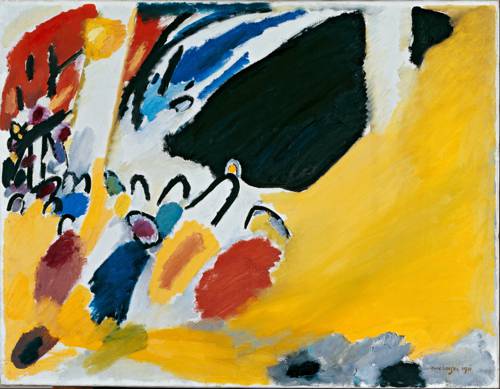
FAQ About Wassily Kandinsky

Who was Wassily Kandinsky?
Wassily Kandinsky was a Russian painter and art theorist, renowned for being a pioneer in abstract art. He is credited with creating some of the first purely abstract works and is a key figure in the development of modern art. Kandinsky's influential theories about art and creativity have had a lasting impact on the art world.

What is Wassily Kandinsky famous for?
Wassily Kandinsky is famous for his abstract paintings and his role as a theoretician who helped develop art concepts that shifted from representational to abstract. His works and writings explored the relationship between color and form, and he believed that abstract art could express deep spiritual truths.

What style of art did Wassily Kandinsky pioneer?
Wassily Kandinsky is best known for pioneering abstract art. His style gradually transitioned from impressionistic landscapes to vibrant, non-representational compositions. By emphasizing color and form over subject matter, Kandinsky broke from traditional artistic conventions and set the stage for modern abstract art movements.

What are some of Wassily Kandinsky's most famous works?
Some of Wassily Kandinsky's most celebrated works include 'Composition VII' (1913), 'Improvisation 28' (First version, 1912), 'Several Circles' (1926), and 'Yellow-Red-Blue' (1925). These paintings exemplify his exploration of color, form, and abstract concepts.

When did Wassily Kandinsky start creating abstract art?
Wassily Kandinsky began exploring abstraction in his art in the early 20th century, around 1910. His early abstract works marked a departure from traditional art forms and portrayed his innovative approach to representing emotions and ideas through color and form.

What are some themes in Kandinsky's art?
Themes in Kandinsky's art include spirituality, emotional expression, and the synthesis of the visual and musical arts. He was deeply influenced by color theory, and he often sought to evoke emotions and spiritual insights through his abstract compositions.

How did Wassily Kandinsky influence modern art?
Wassily Kandinsky influenced modern art by pioneering abstract techniques and advancing theories about the emotional and spiritual potential of art. His work inspired movements such as Abstract Expressionism, and his written works provided a theoretical framework that continued to influence artists throughout the 20th century.

What art movements was Kandinsky associated with?
Kandinsky was associated with various art movements, including Expressionism and Abstract Art. He was a member of the Blue Rider group, which sought to explore new spiritual and abstract themes in art. His work with the Bauhaus School also contributed to his impact on modern art education.

Where did Wassily Kandinsky study art?
Wassily Kandinsky studied art in Munich at the Academy of Fine Arts. His education included a focus on painting and printmaking, and he was exposed to various avant-garde movements that would later influence his development as an abstract artist.

What did Kandinsky believe about color?
Kandinsky believed that color had powerful emotional and spiritual effects. He theorized that color could evoke specific feelings and resonate with the soul, an idea he elaborated on in his book 'Concerning the Spiritual in Art.' His color theory was instrumental in the development of abstract art.

How did Kandinsky's early life influence his art?
Wassily Kandinsky's early life in Russia, where he was exposed to the vibrant cultural and religious traditions of the region, deeply influenced his appreciation for color and spirituality. His background in law and economics also contributed to his analytical approach to art theory, merging logic with creativity.

What is Kandinsky's 'Concerning the Spiritual in Art' about?
'Concerning the Spiritual in Art' is a seminal theoretical work by Wassily Kandinsky, where he discusses the spiritual nature of art and the role of artists in society. Kandinsky argues that art should transcend materialistic representation and instead express spiritual realities, primarily through color.

Did Kandinsky collaborate with other artists?
Yes, Kandinsky collaborated with several artists, particularly during his time with the Blue Rider group and the Bauhaus School. He worked alongside influential figures like Franz Marc, Paul Klee, and Lyonel Feininger, finding common ground in their pursuit of abstract expression and innovation in art.

What role did Kandinsky play at the Bauhaus School?
At the Bauhaus School, Kandinsky served as a teacher and a leader of the painting workshop. He played a crucial role in integrating abstract theories into the Bauhaus curriculum, influencing generations of artists and designers with his approach to color and form.

How did world events affect Kandinsky's work?
Kandinsky's work was significantly affected by world events, including the Russian Revolution and both World Wars. These events exposed him to political instability and cultural shifts, which he reflected in his art through an exploration of spiritual and abstract themes, seeking solace in creativity amidst turmoil.

Did Kandinsky write other important texts besides 'Concerning the Spiritual in Art'?
Yes, Wassily Kandinsky wrote several other important texts, including 'Point and Line to Plane,' which explored the fundamental elements of art and design. His writings contributed heavily to the theoretical groundwork for modern abstract art and design principles.

What is Kandinsky's legacy in the art world?
Kandinsky's legacy in the art world is profound, as he is considered a father of abstract art. His innovative use of color, form, and theory continues to influence art education, practice, and criticism. The principles he formulated maintain relevance in contemporary art discourse.

Where can Kandinsky's artworks be viewed today?
Kandinsky's artworks can be viewed in major museums and galleries around the world, including the Guggenheim Museum in New York, the Centre Pompidou in Paris, and the State Hermitage Museum in St. Petersburg. His works are integral parts of many prestigious public and private collections.

What was Kandinsky's theory of art's emotional impact?
Kandinsky's theory of art's emotional impact centers on the idea that abstract art can convey profound emotional and spiritual experiences. He believed that the elements of art, such as color and form, function like notes in music, capable of producing harmonious or dissonant effects to elicit emotional responses.

Why did Kandinsky consider himself a 'painter of music'?
Kandinsky considered himself a 'painter of music' because he often sought to translate musical compositions into visual art. He was deeply inspired by music's structure and emotional depth and aimed to create visual experiences that mirrored the impact of musical performances through abstract forms.
